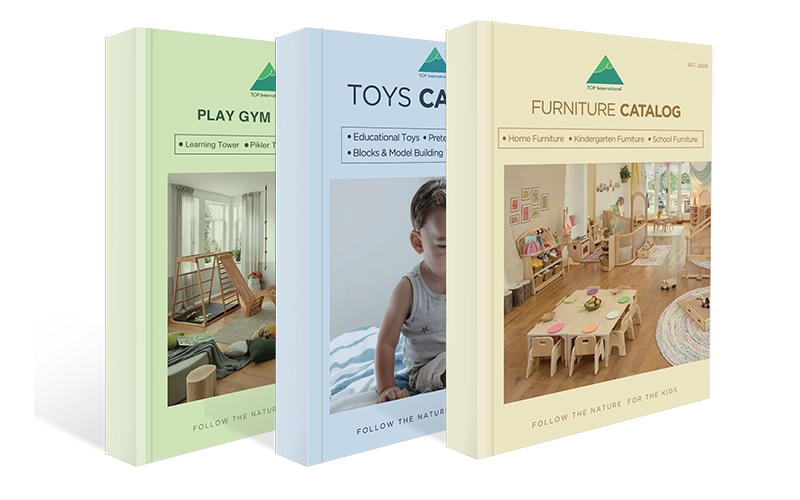คุณกำลังดิ้นรนเพื่อรักษาระเบียบในห้องเรียนก่อนวัยเรียนของคุณหรือไม่ คุณสงสัยหรือไม่ว่าทำไมกฎในห้องเรียนจึงมีความสำคัญมากในโรงเรียนอนุบาล กฎเหล่านี้มีบทบาทอย่างไรในการกำหนดพฤติกรรมและการเติบโตทางอารมณ์ของเด็ก?
กฎในห้องเรียนก่อนวัยเรียนมีความสำคัญอย่างยิ่งต่อการสร้างสภาพแวดล้อมที่มีโครงสร้างและเสริมสร้างความอบอุ่น ซึ่งเด็กๆ จะรู้สึกปลอดภัย มีคุณค่า และได้รับการสนับสนุนให้เรียนรู้ กฎเหล่านี้กำหนดความคาดหวังที่ชัดเจน ส่งเสริมความเคารพ ความร่วมมือ และความเป็นอิสระ และช่วยให้เด็กๆ พัฒนาทักษะทางสังคมและการควบคุมตนเอง กฎเหล่านี้ส่งเสริมพฤติกรรมเชิงบวกและความรู้สึกถึงความรับผิดชอบ ซึ่งช่วยให้เกิดความมั่นคงในสภาพแวดล้อมที่เปลี่ยนแปลงตลอดเวลา และทำให้มั่นใจได้ว่าเด็กๆ จะเจริญเติบโตทั้งทางอารมณ์และทางวิชาการ
คู่มือนี้จะอธิบายว่าทำไมกฎในห้องเรียนสำหรับเด็กก่อนวัยเรียนและอนุบาลจึงมีความสำคัญมาก กฎเหล่านี้มีส่วนช่วยในการพัฒนาอารมณ์ของเด็กอย่างไร และคุณจะนำกฎระเบียบที่มีประสิทธิภาพมาใช้เพื่อบรรลุเป้าหมายทางการศึกษาของคุณได้อย่างไร แล้วคุณจะสร้างกฎที่มีความหมายและทำให้กฎเหล่านี้ยึดถือได้อย่างไร มาเริ่มกันเลย

กฎในห้องเรียนสำหรับเด็กก่อนวัยเรียนมีอะไรบ้าง?
กฎในห้องเรียนก่อนวัยเรียนเป็นแนวทางปฏิบัติที่เรียบง่ายซึ่งออกแบบมาเพื่อช่วยให้เด็กเล็กปรับตัวเข้ากับสภาพแวดล้อม โต้ตอบกับเพื่อนๆ และสร้างทักษะชีวิตที่จำเป็น กฎเหล่านี้ช่วยสร้างโครงสร้าง ส่งเสริมพฤติกรรมเชิงบวก และกำหนดขอบเขตที่ชัดเจนในห้องเรียน
ต่อไปนี้เป็นตัวอย่างกฎห้องเรียนที่มีประสิทธิผลสำหรับโรงเรียนอนุบาล:
- ใช้เท้าเดินข้างใน
- ยกมือขึ้นก่อนที่จะพูด
- ใช้คำพูดที่อ่อนโยนและมือที่อ่อนโยน
- ดูแลของเล่นและหนังสือ
- ฟังเมื่อครูพูด
- เป็นเพื่อนที่ดีด้วยการแบ่งปันและการช่วยเหลือ
- เก็บของเล่นของคุณหลังจากเล่นเสร็จ
เด็กก่อนวัยเรียนต้องมีกฎเกณฑ์ที่สั้น ชัดเจน และมีการเตือนซ้ำๆ กันอย่างสม่ำเสมอ กฎเกณฑ์ในห้องเรียนสำหรับเด็กก่อนวัยเรียนจะเน้นที่การสร้างความรับผิดชอบ ความเคารพ และการควบคุมตนเองในลักษณะที่สอดคล้องกับช่วงพัฒนาการของพวกเขา
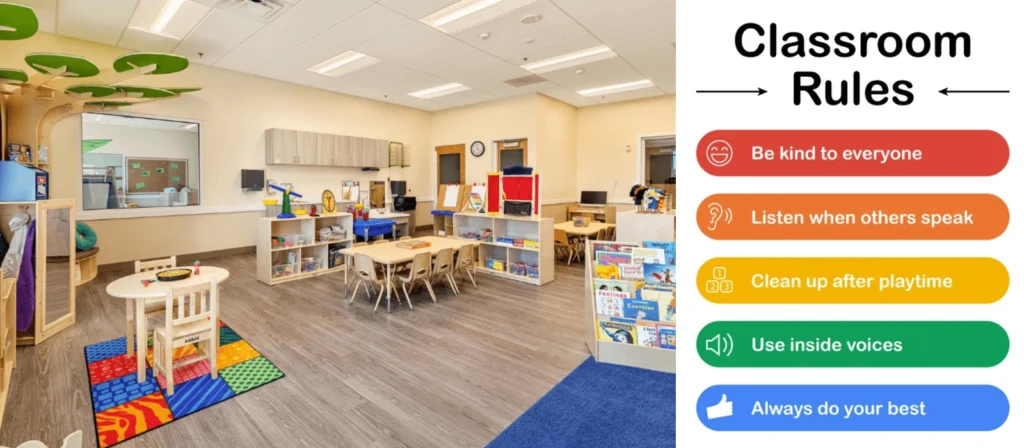
ทำไมกฎเกณฑ์ในห้องเรียนก่อนวัยเรียนจึงมีความสำคัญ?
โรงเรียนอนุบาลมักจะเป็นสภาพแวดล้อมที่มีโครงสร้างชัดเจนแห่งแรกที่เด็กๆ ได้สัมผัส โรงเรียนอนุบาลและ กฎระเบียบห้องเรียนรับเลี้ยงเด็ก เป็นรากฐานของพื้นที่ที่ปลอดภัย มีความเคารพ และให้การสนับสนุน ต่อไปนี้คือเหตุผลสำคัญบางประการว่าเหตุใดจึงมีความสำคัญ:
1. การส่งเสริมความปลอดภัยและโครงสร้าง
กฎเกณฑ์ต่างๆ เช่น “เดิน ห้ามวิ่งในร่ม” และ “ใช้มือที่อ่อนโยน” จะสร้างสภาพแวดล้อมที่คาดเดาได้ซึ่งเด็กๆ จะรู้สึกปลอดภัย กฎเกณฑ์ที่เน้นความปลอดภัยช่วยลดอุบัติเหตุและทำให้ทุกคนสามารถเข้าร่วมได้อย่างสบายใจ
2. การส่งเสริมทักษะทางสังคม
เด็กก่อนวัยเรียนเพิ่งจะเริ่มปรับตัวเข้ากับความสัมพันธ์ทางสังคม กฎเกณฑ์ต่างๆ เช่น “ผลัดกันแบ่งปัน” สอนทักษะที่จำเป็น เช่น ความเห็นอกเห็นใจ ความร่วมมือ และการแก้ไขข้อขัดแย้ง ซึ่งช่วยวางรากฐานสำหรับปฏิสัมพันธ์เชิงบวก
3. การส่งเสริมการเจริญเติบโตทางอารมณ์
การกำหนดขอบเขตที่ชัดเจนจะช่วยให้เด็กๆ จัดการอารมณ์ของตนเองและเข้าใจถึงผลที่ตามมาจากการกระทำของตนเอง ตัวอย่างเช่น กฎที่ว่า “ใช้คำพูดเพื่อแสดงความรู้สึก” จะช่วยส่งเสริมการแสดงออกและสติปัญญาทางอารมณ์
4. การเตรียมความพร้อมสู่ความสำเร็จในอนาคต
กฎระเบียบในห้องเรียนระดับก่อนวัยเรียนสะท้อนถึงความคาดหวังที่เด็กๆ จะต้องเผชิญในชั้นอนุบาลและชั้นต่อๆ ไป การเรียนรู้ที่จะปฏิบัติตามคำสั่ง เคารพผู้อื่น และทำงานร่วมกันจะช่วยเตรียมความพร้อมให้เด็กๆ ประสบความสำเร็จทั้งในด้านวิชาการและสังคมในระยะยาว

ความแตกต่างระหว่างกฎเกณฑ์และความคาดหวัง
แม้ว่ากฎเกณฑ์และความคาดหวังอาจดูคล้ายคลึงกัน แต่ทั้งสองอย่างนี้มีวัตถุประสงค์ที่แตกต่างกันในห้องเรียน ทั้งสองอย่างนี้มีความจำเป็นต่อการสร้างสภาพแวดล้อมการเรียนรู้ที่กลมกลืน แต่การเข้าใจความแตกต่างระหว่างทั้งสองจะช่วยให้ครูสามารถนำไปใช้ได้อย่างมีประสิทธิภาพมากขึ้นในห้องเรียนระดับก่อนวัยเรียน ห้องเรียนระดับอนุบาล และแม้แต่ห้องเรียนระดับอนุบาล
ความแตกต่างที่สำคัญระหว่างกฎและความคาดหวัง
| ด้าน | กฎในห้องเรียน | ความคาดหวังในห้องเรียน |
|---|---|---|
| คำนิยาม | พฤติกรรมที่เจาะจงและดำเนินการได้ที่ต้องปฏิบัติตาม | เป้าหมายหรือคุณค่าที่กว้างกว่าสำหรับพฤติกรรม |
| ตัวอย่าง | “ยกมือขึ้นเพื่อพูด” | “ให้ความเคารพต่อผู้อื่น” |
| วัตถุประสงค์ | การแนะนำการดำเนินการอย่างเร่งด่วน | การส่งเสริมทักษะทางสังคมในระยะยาว |
| ขอบเขต | จำกัดเฉพาะพฤติกรรมเฉพาะห้องเรียน | ใช้ได้กับหลากหลายสถานที่ (ห้องเรียน, บ้าน, สนามเด็กเล่น) |
| ความยืดหยุ่น | แบบตายตัวและไม่สามารถต่อรองได้ | ปรับเปลี่ยนได้ตามบริบทหรือความต้องการของแต่ละบุคคล |
ในห้องเรียนระดับก่อนวัยเรียน การสร้างสมดุลระหว่างกฎเกณฑ์และความคาดหวังถือเป็นสิ่งสำคัญในการส่งเสริมสภาพแวดล้อมการเรียนรู้เชิงบวกและสนับสนุน กฎเกณฑ์เป็นการกำหนดขอบเขตที่ชัดเจนและดำเนินการได้ ซึ่งจะช่วยชี้นำพฤติกรรมในทันที ในขณะที่ความคาดหวังจะเน้นที่ค่านิยมที่กว้างขึ้นและทักษะทางสังคม ช่วยให้เด็กๆ เข้าใจจุดประสงค์เบื้องหลังกฎเกณฑ์ เมื่อนำมารวมกันแล้ว กฎเกณฑ์เหล่านี้จะสร้างพื้นที่ที่กลมกลืนกันซึ่งเด็กๆ รู้สึกปลอดภัย ได้รับความเคารพ และมีอำนาจในการเติบโต ไม่ว่าจะเป็นกฎเกณฑ์ในห้องเรียนระดับก่อนวัยเรียน อนุบาล หรืออนุบาล ความสมดุลนี้สนับสนุนทั้งสภาพแวดล้อมที่มีโครงสร้างและปฏิสัมพันธ์ทางสังคมที่ไม่มีโครงสร้าง ซึ่งช่วยวางรากฐานที่แข็งแกร่งสำหรับความสำเร็จในโรงเรียนและในชีวิต
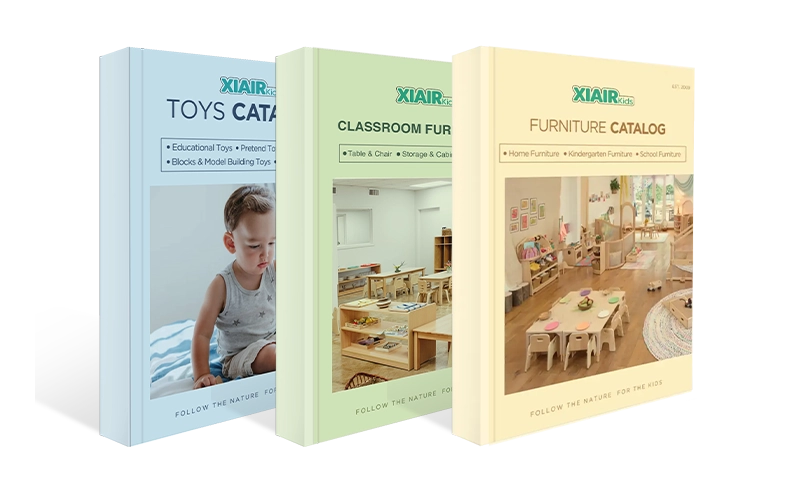
จะสร้างกฎเกณฑ์ในห้องเรียนสำหรับเด็กก่อนวัยเรียนได้อย่างไร?
Designing effective preschool classroom rules requires creativity, thoughtfulness, and an understanding of young children’s developmental needs. By creating rules that are simple, visual, and positively phrased, educators can foster a structured and harmonious learning environment. Below, we explore creative strategies to create, implement, and reinforce classroom rules in preschool, nursery, and kindergarten classrooms.
1. Creative Ideas for Classroom Rules Poster and Display
Visual aids play a crucial role in helping young children internalize and remember rules. Here are a few creative and practical ideas to enhance your classroom:

a. Illustrated Classroom Rules Posters
Use colorful posters with simple illustrations to visually represent each preschool classroom rule. For example, an image of a child raising their hand can represent “Raise your hand to speak.” This approach is especially helpful for preschoolers who are still developing reading skills.
b. Themed Rule Displays
Incorporate fun themes like animals, space, or seasons to make the rules more engaging. For example:
An animal-themed display might say, “Be as gentle as a lamb!”
A space-themed poster could say, “Stay grounded—use walking feet indoors!”

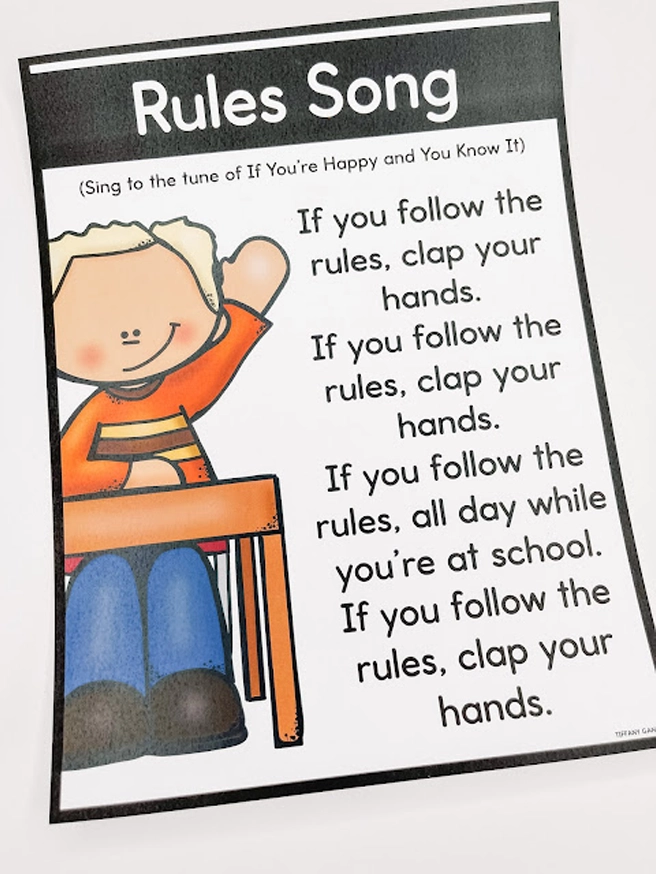
c. Combine Rules With Songs or Rhymes
Turn your classroom rules for preschoolers into a catchy song or rhyme to help children remember them. For example:
- “Clean up, clean up, everyone do their share!”
- “Hands are for helping, not for hitting!”
d. Decoration Classroom Rules Display Ideas
- Use seasonal themes like spring flowers, autumn leaves, or snowflakes to decorate classroom rule displays.
- Add borders with colorful tape, LED lights, or craft materials to draw attention to the posters.
- Incorporate 3D textures (e.g., felt, foam) to make displays more engaging and interactive for preschoolers.

2. Creating Rules Tailored to Age Groups
Adapting preschool classroom rules to different age groups involves more than just verbal explanations. It requires tailored approaches, tools, and activities that align with the developmental stages of nursery, pre-k, and kindergarten children. Below are creative strategies to effectively implement classroom rules for preschoolers across these age groups:
a. Nursery Classrooms: Using Visual and Tactile Cues
For nursery-aged children (2-3 years old), rules should be simple and reinforced with visual and tactile cues. At this stage, children are learning through sensory experiences and repetition.
- Classroom Layout: Organize the environment into clear zones with visual boundaries. For example, use colorful rugs or play mats to define play areas, making the rule “Toys stay in the play zone” intuitive.
- Props for Safety Rules: Use large, easy-to-understand props like stop signs at doors or red/green cards for cues like “Stop running” or “Time to clean up.”
- Interactive Walls: Set up interactive boards with textured shapes or Velcro pieces to represent rules. For example, children can attach “safe” or “unsafe” icons to actions during guided activities.
These tools help young children internalize nursery classroom rules in a way that’s tangible and age-appropriate.
b. Pre-K Classrooms: Gamified Rules and Group Activities
At the prek classroom rules level (4-5 years old), children are ready for more social engagement and structured play. This makes group activities and games an effective way for pre k classroom rules.
- Role-Playing Rules: Create scenarios where children practice following rules such as taking turns, raising hands, and walking indoors. For instance, you can set up a pretend “classroom market” where children take turns being the cashier and customer, following the rule “Wait your turn.”
- Gamified Clean-Up Races: Turn the rule “Clean up after playtime” into a fun competition where children race to see who can tidy up their area fastest, encouraging teamwork and responsibility.
- Sticker Reward Boards: Use a group reward chart where children earn stickers for collectively following rules like “Share your toys” or “Be kind to friends.”
By incorporating gamification into rules of the classroom for preschool, teachers can make learning fun and memorable.
c. Kindergarten Classrooms: Encouraging Ownership of Rules
Kindergarten-aged children (5-6 years old) are more capable of understanding abstract concepts like responsibility and fairness. This makes it the perfect time to involve them directly in creating and upholding kindergarten classroom rules.
- Collaborative Rule-Making: During the first week of school, invite students to contribute ideas for the preschool classroom rules. For example, guide them with questions like “What do we need to do to keep everyone safe and happy?” Then compile their suggestions into a preschool classroom rules poster that they helped create.
- Leadership Opportunities: Assign leadership roles like “Line Leader” or “Clean-Up Captain” to encourage children to model positive behaviors for their peers. This supports rules such as “Raise your hand to speak” and “Be responsible for your belongings.”
- Reflection Circles: At the end of the day, hold a short discussion where students reflect on how they followed the rules. For example, ask, “Who can share how they helped a friend today?”
By giving children ownership of classroom rules for kindergarten, teachers foster a sense of accountability and pride in their behavior.

3. Reinforcing Preschool Classroom Rules with Rewards
Reward systems are an essential tool for reinforcing preschool classroom rules, helping children internalize positive behaviors while staying motivated. Below are some creative and practical reward types tailored for preschoolers:
a. Visual and Verbal Rewards
Immediate feedback through visual and verbal rewards strengthens a child’s sense of achievement and encourages them to repeat good behavior.
b. Points and Scoreboards
Points-based systems allow children to see the direct results of their actions in a measurable way.
- Individual Point Charts: Create personalized charts for each child where they earn points for actions like “listening to the teacher” or “lining up quietly.” At the end of the week, children with a certain number of points can choose a special activity or prize.
c. Gift Rewards
Physical rewards add an element of fun and anticipation, keeping children motivated.
- Prize Boxes: Create a small treasure box with stickers, crayons, or erasers. Children can select a prize after accumulating points or showing exemplary behavior.
- Raffles: Introduce a raffle system where children earn tickets for following rules of the classroom for preschool. At the end of the week, draw tickets for small rewards, adding an exciting element of surprise.
d. Group Rewards
Group rewards foster a sense of community and encourage children to work together to achieve shared goals.
- Marble Jar System: Add marbles to a jar every time the class collectively follows a rule, such as cleaning up or listening quietly. Once the jar is full, reward the entire class with a fun event like extra outdoor play or a movie day.
e. Leadership Rewards
Assigning leadership roles as rewards encourages children to act as role models while reinforcing responsibility.
- Classroom Leader Roles: Award roles such as “Line Leader” or “Snack Helper” to children who consistently follow preschool classroom rules.
- Rotating Group Leaders: Let children who exhibit positive behavior lead small group activities, boosting their confidence while inspiring their peers.

While reward systems are effective for reinforcing preschool classroom rules, they can present challenges. Over-reliance on rewards may cause children to follow rules only for the sake of receiving a prize, rather than understanding their intrinsic value. Reward systems can also unintentionally create competition or feelings of inadequacy among children who struggle to earn rewards as quickly as others. To address these issues, teachers should focus on gradually reducing physical rewards, ensuring fairness, and keeping incentives fresh and engaging. Balancing these rules thoughtfully allows rewards to remain a positive and motivating tool for fostering rule-following behavior.
4. Benefits of Preschool Classroom Rules
Implementing preschool classroom rules ensures a safe, productive, and nurturing learning environment for both children and teachers. These rules provide a foundation for fostering positive behaviors, emotional development, and collaborative interactions in nursery classrooms, pre-k classrooms, and kindergarten classrooms. Below, we explore how these rules benefit kids and teachers.
For Kids
Empower children to grow and thrive with structured preschool classroom rules!
- Foster independence with visual preschool classroom rules.
- Promote safety using rules like “Walk indoors”.
- Build social skills through sharing and teamwork rules.
- Encourage responsibility with rules like “Clean up toys”.
สำหรับครู
Simplify classroom management and create a positive learning atmosphere!
- Simplify routines with clear preschool classroom rules posters.
- Guide transitions smoothly using structured preschool classroom rules.
- Create positivity with rules like “Be kind to others”.
- Save time with printable pre-k classroom rules.
Preschool classroom rules are essential for creating a thriving learning environment. For children, these rules nurture independence, promote safety, and foster emotional growth. For teachers, they simplify classroom management and support the development of a positive and productive atmosphere. By implementing effective rules in daycare classrooms, pre-k classrooms, and kindergarten classrooms, educators can ensure a strong foundation for learning and social development.
What Are the Rules of Different Educational Systems?
Classroom rules vary across educational systems, as each philosophy has unique goals and approaches to teaching young children. Below, we explore the rules of the ห้องเรียนมอนเตสซอรี่, along with other systems like เรจจิโอ เอมิเลีย, วอลดอร์ฟ, and traditional preschool settings.
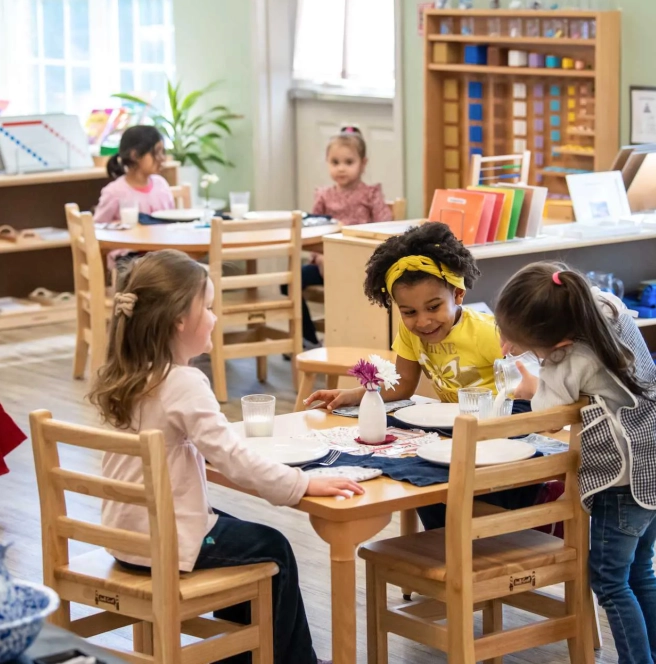
1. Montessori Preschool กฎในห้องเรียน
ห้องเรียนแบบมอนเตสซอรี่ emphasize independence, self-discipline, and respect for the environment and others. Key rules include:
- “Choose activities quietly and independently.”
- “Respect the work of others by observing silently.”
- “Clean up and return materials after use.”
- “Work within your space and avoid disrupting others.”
These rules support the Montessori philosophy of fostering self-directed learning and promoting responsibility.
2. Reggio Emilia Preschool กฎในห้องเรียน
ใน เรจจิโอ เอมิเลีย classrooms, the focus is on collaboration and exploration. Rules are often designed to encourage communication and creativity, such as:
- “Listen actively to your peers during group discussions.”
- “Take turns sharing ideas and materials.”
- “Document your work and learning process.”
- “Respect and care for the shared classroom environment.”
These rules aim to build a sense of community and inspire curiosity-driven learning.


3. Waldorf Preschool กฎในห้องเรียน
Waldorf education emphasizes imagination, rhythm, and holistic development. Classroom rules reflect these values:
- “Follow daily rhythms and routines to create harmony.”
- “Handle toys and materials with care.”
- “Speak kindly and use respectful language.”
- “Participate actively in group activities like storytelling and singing.”
These rules are designed to nurture creativity and a strong sense of social cohesion.
4. Traditional Preschool and Kindergarten Rules
In more traditional settings, rules are often focused on creating a safe and structured environment for learning. Standard preschool classroom rules include:
- “Raise your hand to speak.”
- “Use walking feet indoors to stay safe.”
- “Share toys and take turns with classmates.”
- “Follow instructions from your teacher.”
These rules ensure children learn basic social and academic skills while maintaining safety and order.

While each educational philosophy has unique rules, there are shared goals: promoting respect, safety, and independence. Teachers in any system can adapt these rules to meet the needs of their nursery classrooms, pre-k classrooms, or kindergarten classrooms, using tools like classroom rules posters or visual classroom rules to make expectations clear for children.
Adapting Rules for Different Age Groups and Developmental Stages
Classroom rules should be tailored to the developmental stages of children. Different age groups—infants, toddlers, preschoolers, and kindergarteners—have unique needs, abilities, and ways of understanding rules. Below is a table to illustrate how preschool classroom rules and general classroom rules can be adapted for each group.
| กลุ่มอายุ | Developmental Focus | Example Rules | Tools to Reinforce Rules |
|---|---|---|---|
| Infants (0-1) | Building trust and feeling secure. Focus on sensory experiences and routines. | – “Be gentle with others.” – “Stay in your safe play area.” | – Visual cues (e.g., stop signs). – Repetition and soothing tones. |
| Toddlers (1-3) | Learning basic boundaries and exploring independence. | – “Use walking feet indoors.” – “Hands stay to yourself.” | – Simple classroom rules posters with pictures. – Demonstrations and modeling. |
| Preschoolers (3-4) | Developing social skills and understanding shared spaces. | – “Take turns when sharing toys.” – “Clean up after playtime.” | – Sticker charts for individual achievements. – Group rewards for teamwork. |
| Pre-K (4-5) | Building responsibility and collaboration. | – “Raise your hand to speak.” – “Follow instructions from the teacher.” | – Pre-k classroom rules posters with visuals and words. – Positive reinforcement like verbal praise. |
| Kindergarten (5-6) | Understanding cause-and-effect relationships and promoting leadership. | – “Be respectful to classmates.” – “Help keep the classroom tidy.” | – Assign leadership roles like “Line Leader” or “Clean-Up Captain.” – Visual classroom charts and group goals. |
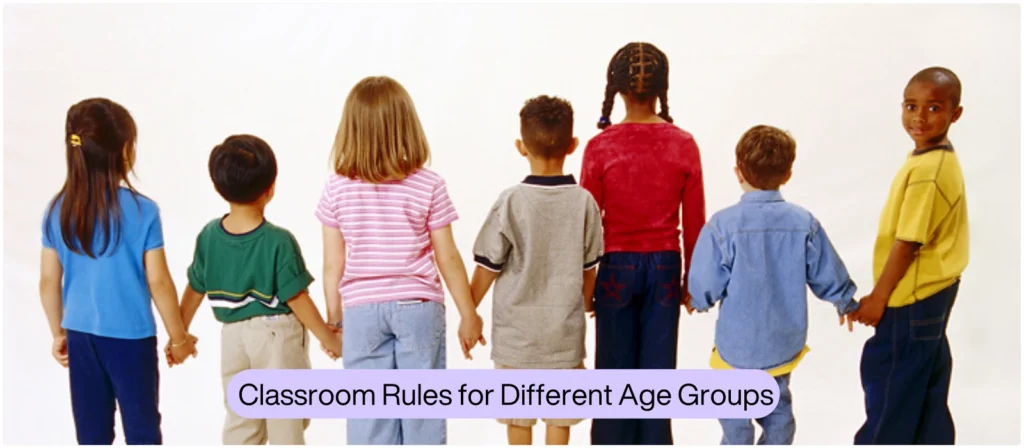
Involving Parents with Rule Enforcement
Involving parents in enforcing preschool classroom rules is key to creating consistency between school and home. One effective strategy is to provide parents with classroom rules posters or printable versions of the rules, allowing them to reinforce expectations like “Use walking feet indoors” or “Clean up toys” at home. Additionally, organizing workshops or sending regular updates about classroom behavior expectations helps parents stay informed and aligned with the school’s approach. This collaboration between parents and teachers strengthens the consistency of rule enforcement, promoting positive behavior both in school and at home.
Where to Find Preschool Classroom Rules Printables
Finding high-quality preschool classroom rules printables can make rule enforcement easier and more engaging. At ท็อป มอนเตสซอรี่, we offer a wide selection of printable classroom rules posters, pre-k classroom rules, and other visual aids tailored for nursery classrooms, kindergarten classrooms, and beyond. These resources are designed to help teachers communicate expectations clearly while promoting a positive and structured learning environment.
Visit ท็อป มอนเตสซอรี่ to explore our free and premium preschool classroom rules printables and start creating a better classroom today!

Conclusion: The long-term benefits of preschool classroom rules
Effective preschool classroom rules help children develop important skills like independence, self-regulation, and cooperation while ensuring a safe and harmonious environment. By using tools such as classroom rules posters or printable classroom rules for preschoolers, teachers can clearly communicate expectations. Over time, these rules of the classroom for preschool not only improve behavior but also lay the foundation for success in school and beyond, fostering responsible and respectful individuals.








